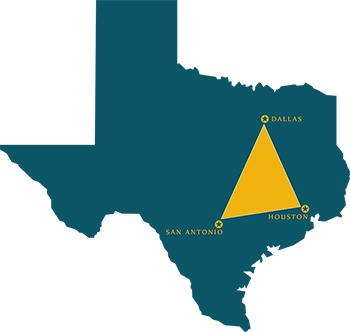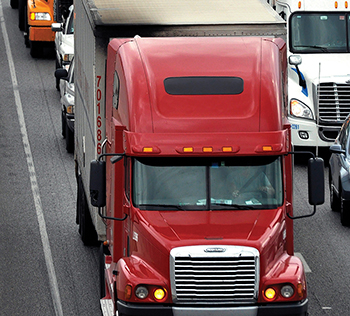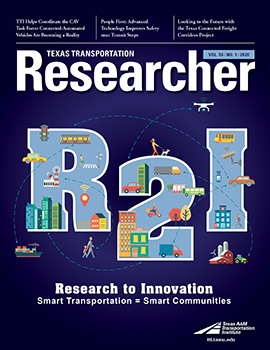Imagine yourself driving a truck along I-35 filled with perishable goods. You rely on your eyes to predict what you might encounter on the road ahead, though you can’t always see every hazard. Advanced transportation technologies can make the difference, noticing (and reacting to) things the human eye can’t. Mobility, safety, reliability, security — all improve when technology supplements human senses.

The Texas A&M Transportation Institute (TTI) is assisting the Texas Department of Transportation (TxDOT) in the development of the Texas Connected Freight Corridors (TCFC) project, funded with an Advanced Transportation Congestion Management Technology Demonstration grant from the Federal Highway Administration. Anticipating a Texas future populated by automated vehicles, the TCFC project evaluates what’s needed to successfully usher in that future, while also improving freight mobility and safety on Texas roads today.
“More than half of all freight tonnage in the United States moves through Texas, which makes it the ideal environment in which to test and evaluate how a connected environment could transform a state’s freight corridors,” says TTI Assistant Research Engineer Nick Wood. “This project will establish a stronger relationship between fleet managers and highway operators for advancing connected vehicle technologies, which will only become more prevalent as Texas moves more goods to people and businesses across the nation.”
The TCFC project involves the deployment of vehicle-to-infrastructure and vehicle-to-vehicle applications across the 865-mile Texas Triangle. The triangle connects Houston, Dallas and San Antonio via Interstates 10, 30, 35 and 45. The four-year project began April 1, 2019, and has several phases, including planning, design and development, and maintenance and operations.
In the planning phase, TTI researchers produced a concept of operations outlining how technologies would support truck drivers and managers. The document presents a scenario wherein a truck driver who travels from San Antonio to Dallas encounters a number of incidents throughout the day. Each incident triggers a warning to the driver through an onboard device that communicates information about closed lanes, stopped vehicles and debris on the highway. The TTI research team is assisting in the deployment of the first few applications, including queue warning, work zone warning, wrong-way driving alerts and truck signal priority.

“In an expanding e-commerce marketplace, consumers are relying more on freight deliveries and the highway corridors that connect homes to businesses,” notes TTI Executive Associate Director Ed Seymour. “This trend will only accelerate as it becomes easier, faster and more convenient for consumers to receive goods and services. This project helps truck fleets and highway agencies learn how advancing technologies can improve safety and mobility.”
Freight is already a significant player when it comes to implementing advanced connected and automated technologies. One example is truck platooning, where one truck operated by a driver is followed by others guided via technology. TTI’s role in the TCFC project invites stakeholders to test new technology applications and strengthens relationships that will prove critical as public agencies and the connected-vehicle industry scale up to a larger connected infrastructure ecosystem. The TCFC project is also evaluating technologies that could improve safety for commercial vehicles, while also reducing passenger vehicle crashes on Texas roads.
“The TCFC project will lay a foundation for a scalable and sustainable connected-vehicle environment that promises to significantly improve safety for the traveling public,” says TxDOT Senior Transportation Engineer Jianming Ma. “In Texas, the last day without a death on the state’s roads was November 7, 2000, nearly two decades ago. Through this project, TTI and other team members are helping TxDOT achieve its Road to Zero goal to end all roadway fatalities on Texas roads by 2050. In the next several decades, connected and automated vehicles have the potential to make the public safer and reduce deaths on Texas roads.”
